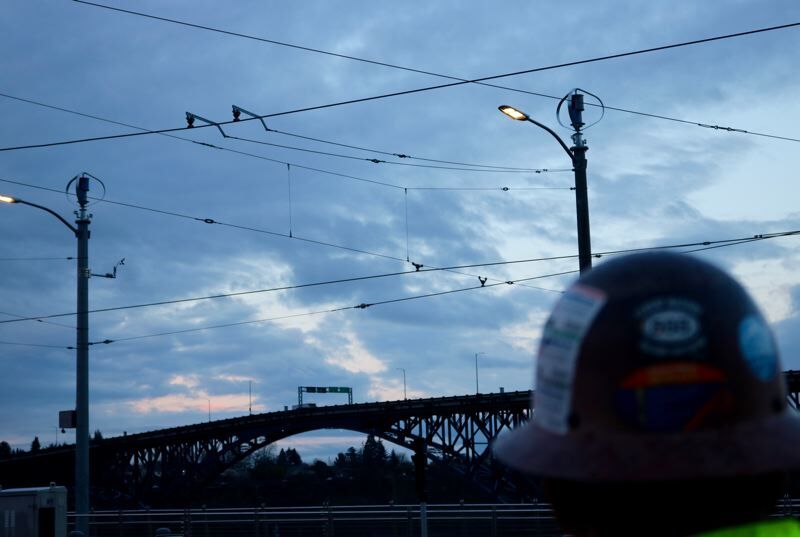Wind turbines power up on Tilikum Crossing
Published 12:00 am Friday, May 3, 2019

- Newly-installed vertical axis wind turbines whirl atop the Tilikum Crossing.
TriMet is trying to catch the wind.
Trending
The transit agency is now generating electricity from 12 new vertical axis wind turbines installed atop existing poles on the north and south sides of the Tilikum Crossing bridge.
“The Tilikum Crossing is a prime place for wind generating because of the location and the amount of wind that we get on the Willamette River,” said TriMet Community Affairs Coordinator Coral Egnew. “This is a unique place in an urban environment.”
Each turbine may generate as much as 1,000 watts of electricity per hour, though it’s a bit of a short circuit for the electrons. The turbines are hooked up to batteries, which power lights that illuminate … the turbines.
Trending
TriMet says students at Portland State University’s School of Mechanical Engineering will determine the actual wattage generated over time, and will harness the data for insights into future projects.
“It works all year round,” Egnew said. “If the wind stops blowing, the battery stores up the excess power.”
With a total cost of $350,000, the whimsical whirligigs were cut from the original Orange Line after TriMet planners received less federal funding than they expected. But the $1.5 billion project ended up coming in under budget, and the Federal Transit Administration eventually re-authorized funding for the turbines and the Gideon Overcrossing
TriMet and its regional partners will pay half of the $350,000.
Egnew said sustainability was a key part of branding the cable-stayed bridge, which carries MAX light-rail trains, the Portland streetcar, TriMet buses, foot-and-pedal traffic — but no cars. The turbines are installed on poles that already host anemometers that measure wind speed.
TriMet has built solar panels on transit stations all along the Orange Line, and at the PSU terminus, but this is their first foray into electricity generated by gusts and billows.
“It serves a function as well as being interesting to look at,” Egnew said. “We’re going to be looking at opportunities for sustainability. That’s a real core feature for TriMet.”







